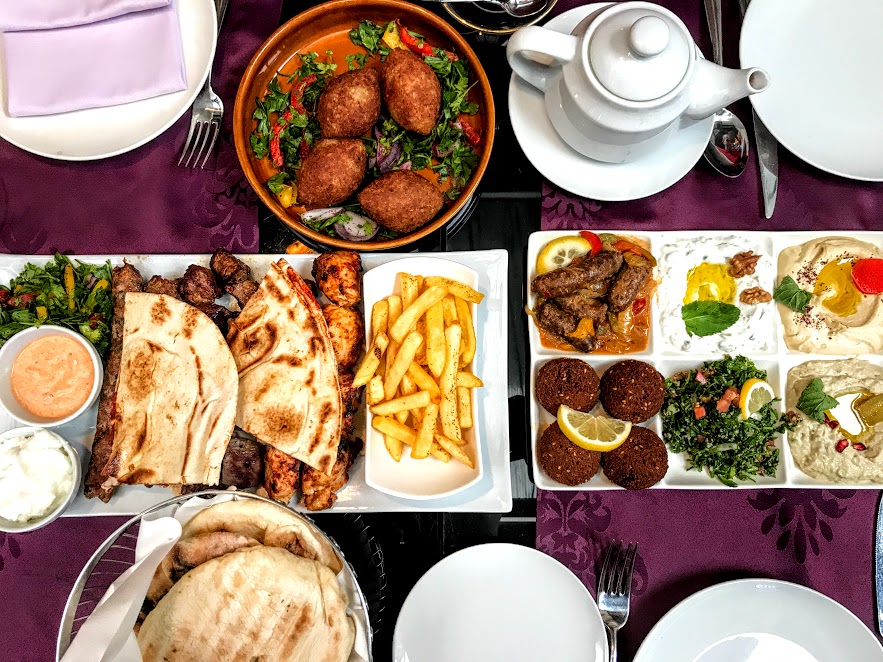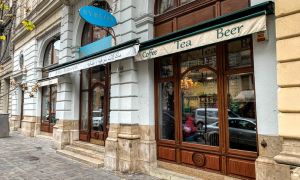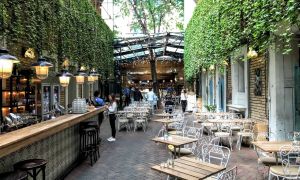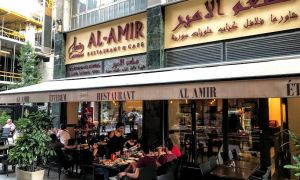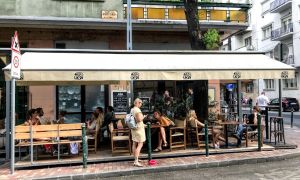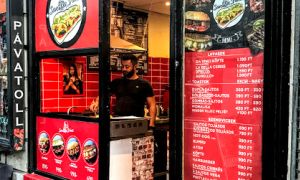I've compiled Budapest's top Middle Eastern, Northern African, Persian, and Georgian restaurants, so you can gorge yourself on creamy hummus, crunchy falafel, fresh fattoush salad, herby ghormeh sabzi, Moroccoan chicken tagine, and traditional khachapuri Adjaruli. 'Nuff said!
Byblos is an elegant Middle Eastern restaurant tucked away on a quite side in the heart of downtown Budapest. Syrian natives Osama and Mohamad Kutaini, brothers who previously worked at a nearby five star hotel restaurant, oversee the operations. The extensive menu features cold and hot mezze, salads, grilled meats, desserts, and there's also water pipes for hookah fans on the upstairs (Byblos serves alcohol, too).
The standout mezzes are the smoky mutabbal (eggplant dip similar to baba ganoush), the thick labneh (strained yogurt), and the makanek (spicy lamb sausage). Also good are the falafels, and the kibbeh, fried lamb meatballs made with bulgur and spices. Most mezzes are priced €8-9 apiece. I was less impressed by the grilled meats and the chicken musakhan, a Palestinian sumac-spiced chicken. For dessert, try kanafeh and the baklava – with vanilla ice cream – for a well-earned sugar-high.
Not every dish is a hit, but for an all-around, comfortable Levantine dining experience in Budapest's city center, Byblos is one of the top choices currently.
